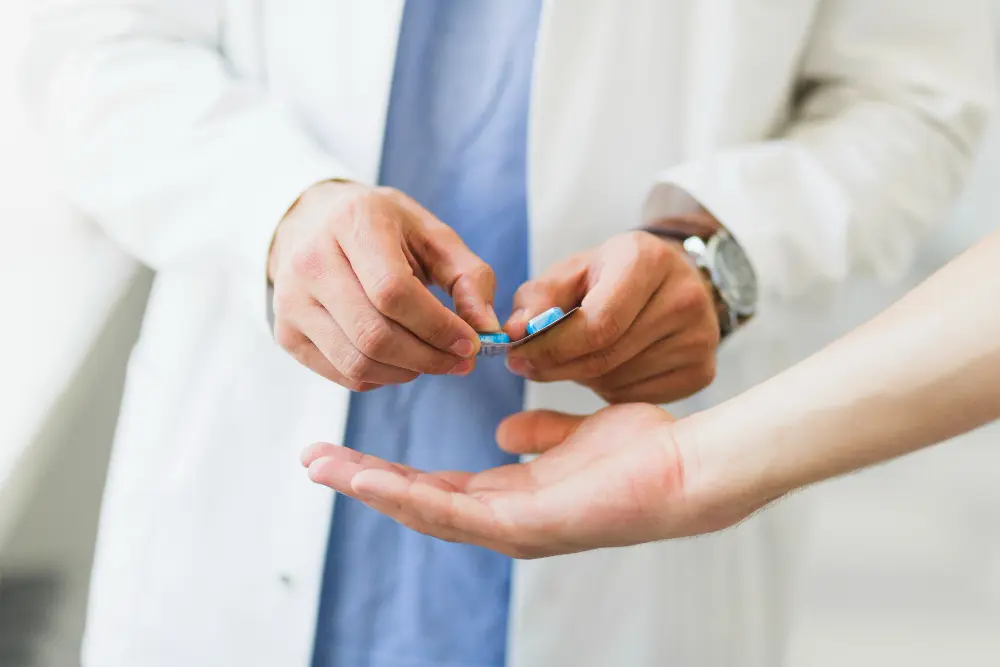
When talking about addiction, this is one of the most important questions that people ask: Can professionals treat addiction successfully? The short answer is yes. A 2020 study shows that 3 in 4 people with addiction eventually recover. However, the process of achieving successful recovery is a complex one. It involves a well-designed treatment plan, which includes taking addiction treatment medications. These medications play a vital role. They help manage withdrawal symptoms and reduce cravings, helping make sobriety more attainable and sustainable. This blog will provide an overview of common medications used to treat addiction. Keep reading to learn more about their purposes and benefits.

When you’re discussing plans to overcome addiction, one thing that your physician will bring up is medication-assisted treatment (MAT). MAT is a substance abuse treatment that utilizes a “whole-patient” approach, combining FDA-approved medications with counseling and behavioral therapies to support recovery. But apart from helping patients attain full recovery, MAT has also been shown to increase patient survival rates, improve treatment retention rates, and reduce criminal activity related to drug use.Using addiction treatment medications to complement therapy and counseling is essential. These prescriptions help stabilize brain chemistry, while therapy sessions address the behavioral and emotional sides of addiction. By tackling both the physical and psychological fronts of addiction, you’ll have higher chances of winning your battle against it.Keep in mind: You cannot overcome addiction on your own. You need a comprehensive treatment plan implemented by a professional to achieve long-term success.

MAT was initially developed in the 1960s to treat opioid use disorder (OUD). Today, these are the most common medications used to treat this type of drug addiction.
Methadone is used to treat OUD and helps in pain management. It helps reduce opioid cravings and withdrawal symptoms by blunting or blocking the effects of opioids. It’s a long-acting full opioid agonist, and you should take it as prescribed for it to be safe and effective. Initially, methadone must be administered under a practitioner's supervision. After a period of stability and compliance, you may take it at home between program visits.
Buprenorphine is pivotal in OUD treatment, being the first medication approved to be prescribed or dispensed in physician offices. It’s an opioid partial agonist, producing weaker effects like euphoria or respiratory depression compared to full opioid agonists like methadone.It boasts unique pharmacological properties, which help reduce withdrawal symptoms and cravings, increase safety in cases of overdose, and lower the potential for misuse.
Naltrexone is effective in treating both opioid and alcohol use disorders. Available in pill form or as an injectable, it blocks the euphoric and sedative effects of drugs.However, unlike buprenorphine and methadone — which activate opioid receptors to suppress cravings — naltrexone binds to and blocks these receptors. Naltrexone has no abuse or diversion potential, making it a safe and effective treatment option.
If you’re receiving treatment for alcoholism, here are the three FDA-approved addiction treatment medications you may encounter.
Disulfiram, also known as Antabuse, was the first FDA-approved drug for treating alcohol dependency. It works by causing unpleasant side effects when alcohol is consumed, making it a strong deterrent. Normally, when you consume alcohol, it is converted to acetaldehyde and then to acetic acid. Disulfiram blocks this conversion, leading to a buildup of toxic acetaldehyde. This causes symptoms — ranging from headache, nausea, vomiting, weakness, mental confusion to anxiety — even with small amounts of alcohol.
Naltrexone is used to minimize the incidence and severity of relapse in alcohol-dependent individuals. If you’re a newly diagnosed patient with moderate or severe alcohol use disorder, expect your doctor to start your treatment with this medication. Professionals typically prefer it due to its convenient dosing schedule and the ability to begin treatment even if you’re still drinking.Naltrexone works by blocking the mu-opioid receptor, which in turn blocks the reinforcing effects of alcohol.

Long-term alcohol use changes brain chemistry, leading to severe cravings and painful withdrawal when drinking stops. Acamprosate (Campral) reduces your brain’s dependence on alcohol. This medication interacts with neurotransmitter systems, helping normalize brain activity disrupted by alcohol cessation. It primarily affects the glutamate and gamma-aminobutyric acid (GABA) systems. It also reduces symptoms like insomnia, anxiety, and restlessness. Unlike other treatments, acamprosate is broken down by the digestive tract — not the liver — making it a safer choice, especially if you have liver issues.
Medical supervision is an essential part of the bigger picture. As designed and facilitated by healthcare providers, a personalized treatment plan that includes medication will help you manage cravings and drug and alcohol withdrawal symptoms more effectively.The critical aspect here is personalization. Remember that the extent of medications’ effects varies from person to person. The same is true when it comes to the impact of drug or alcohol addiction. Your doctor can adjust medications as needed by knowing your specific needs and progress. The goal is to ensure the best outcome possible and minimize the risk of relapse.

Addiction treatment medications are at the core of an effective treatment plan against addiction. As you’ve learned, MAT is a proven method that combines FDA-approved medications with therapy, supporting both the physical and psychological aspects of your recovery. For opioid addiction, common medications include methadone, buprenorphine, and naltrexone. For alcohol addiction, disulfiram, naltrexone, and acamprosate are the three duly approved medications. When embarking on your recovery journey, seeking help from professional healthcare workers is essential. They create personalized treatment plans, monitor progress, and adjust medications as needed. At Oregon Trail Recovery, we offer comprehensive treatment plans, including intensive outpatient programs, to support your recovery. Looking for the best facility for addiction treatment Oregon has to offer? Contact us today!